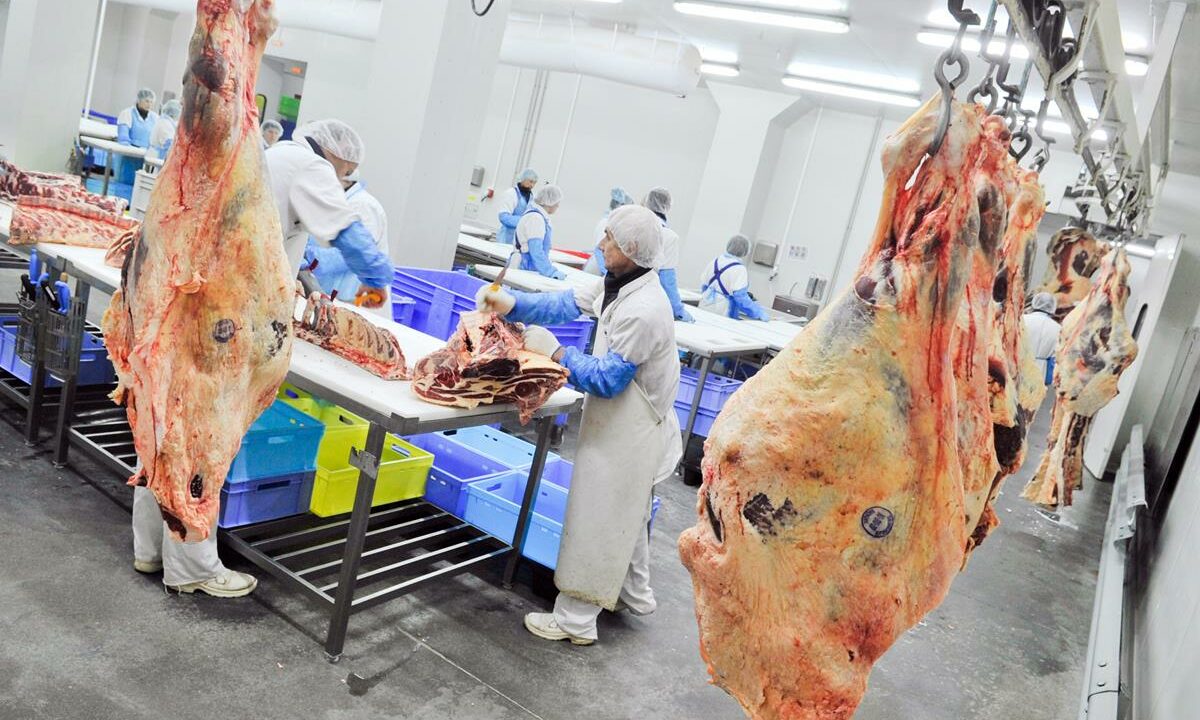Beef factories, for the most part, have succeeded in their quest to bring steer quotes down to 380c/kg this week.
In recent weeks, AgriLand reported that beef buyers were pushing to bring steer quotes back to such a level and it now appears that they have succeeded.
As it stands, the majority of plants are offering 380-385c/kg for steers on the grid. However, those operating at the higher end have suggested that 380c/kg will be their offering as the week draws to a close.
In addition, heifer prices have also come under increased pressure and most buyers are now offering 390-395c/kg to secure supplies. It must be noted that this is the first time that heifer quotes have dropped below the 400c/kg mark this year.
Worryingly for producers, the latest factory cuts will have a major impact on the returns generated from cattle slaughtered over the coming days. This is especially a cause for concern for finishers who bought expensive grass cattle earlier this year.
This is galvanised further when we look back at prices achieved in early June, when steer and heifer quotes stood at 415-420c/kg and 425-430c/kg respectively. On steers alone, that’s a price cut of 40c/kg or €140 on a 350kg carcass.
Despite the factory cuts being imposed on prime cattle, cow prices have remained relatively firm in recent weeks.
For the most part, buyers are offering 345-350c/kg for R-grade cows and 330-340c/kg for O-grade cows. This comes as the demand for manufacturing beef, in other words mince, remains relatively strong. Click here for a detailed breakdown of prices
Lower prices fail to limit supplies
Despite the reduced quotes being offered in recent weeks, there has been no major reduction in the number of cattle being brought forward for slaughter in Department of Agriculture approved beef export plants.
This was particularly the case during the week ending August 6 when some 32,774 cattle were slaughtered in such processing facilities. This was an increase of 1,209 head or 3.8% on the previous week.
During the first week of August, some 15,258 steers and 7,862 cows were slaughtered in approved beef export plants – a collective jump of over 1,000 head.
Despite the overall increase, there was actually a reduction in the number of aged bull and young bull slaughterings during the week ending August 6. Some 185 fewer young bulls were slaughtered, while aged bull throughput declined by 28 head or 4.6%.
- Young bulls: 2,211 head (-185 head or -7.7%);
- Bulls: 586 head (-28 head or -4.6%);
- Steers: 15,258 head (+761 head or +5.4%);
- Cows: 6,853 head (+242 head or +3.7%);
- Heifers: 7,862 head (+242 head or +3.2%);
- Total: 32,774 head (+1,209 head or +5.3%).
Main markets
According to Bord Bia, the British beef trade remained firm last week. This was due to some reduction in supplies and very little change in demand.
Prices from the AHDB show that British R4L steers made the equivalent of 426.33c/kg during the week ending August 4. British and Northern Irish R3 heifers made the equivalent of about 424c/kg and 412c/kg respectively.
Moving to France, the market continued to remain slow last week. This was particularly the case in the Paris region, Bord Bia says, as a number of restaurants and butcher shops closed their doors for the holiday season.
In addition, Bord Bia also says that there were a limited number of retail promotions occurring; those that did focused on chuck beef and ribs.
